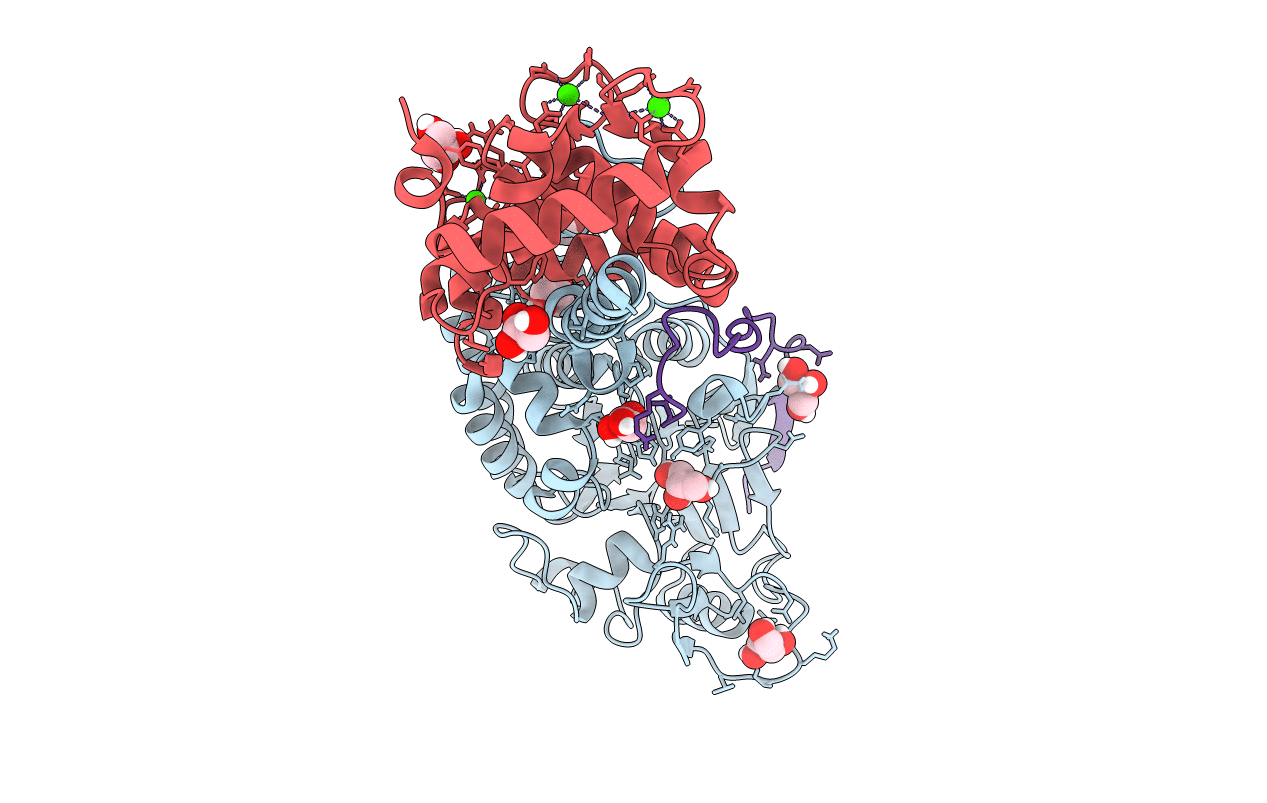
Deposition Date
2012-05-05
Release Date
2013-03-06
Last Version Date
2023-09-13
Entry Detail
PDB ID:
4F0Z
Keywords:
Title:
Crystal Structure of Calcineurin in Complex with the Calcineurin-Inhibiting Domain of the African Swine Fever Virus Protein A238L
Biological Source:
Source Organism:
Homo sapiens (Taxon ID: 9606)
African swine fever virus Malawi LIL 20/1 (Taxon ID: 10500)
African swine fever virus Malawi LIL 20/1 (Taxon ID: 10500)
Host Organism:
Method Details:
Experimental Method:
Resolution:
1.70 Å
R-Value Free:
0.17
R-Value Work:
0.15
R-Value Observed:
0.15
Space Group:
P 1 21 1


